A Complete Warli painting Tutorial Guide
A Complete Warli painting Tutorial Guide
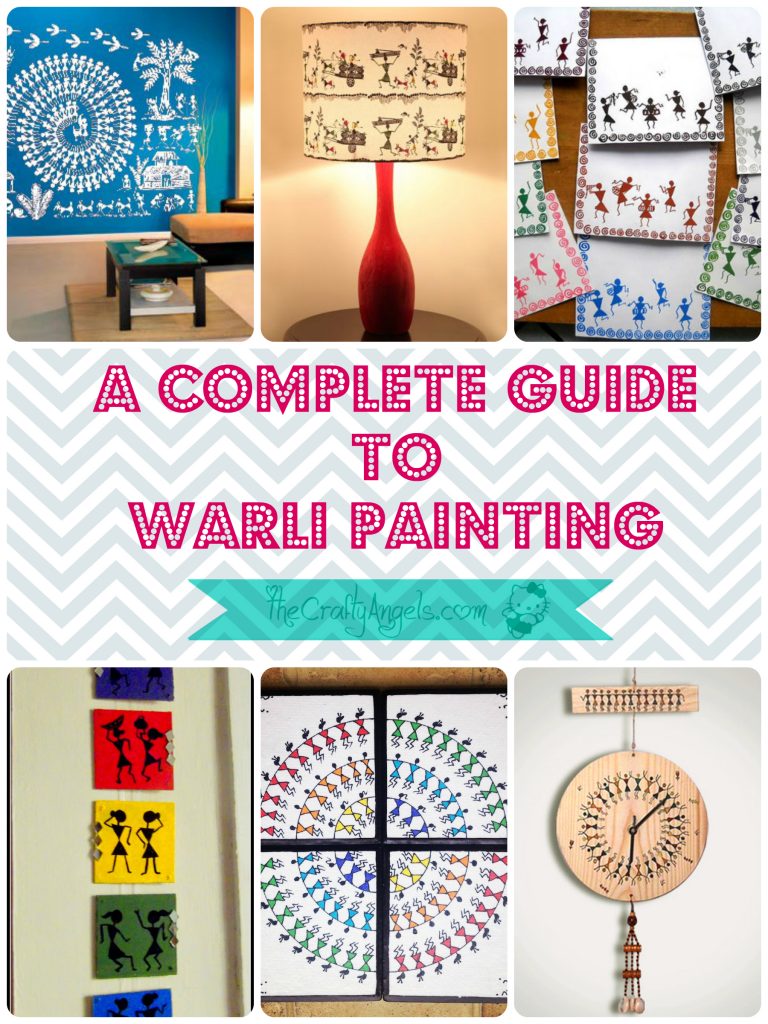
History and origin of warli painting :
Warli painting is a tribal art mostly done by Adivasi from North Sahyadri Range in India .While there are no records of the exact origins of this art, its roots may be traced to as early as the 10th century AD. The Warli paintings which has close resemblance to cave paintings, have often been spotted on the insides of red ochre walls of huts that are built using a mixture of tree branches,mud and cow dung.
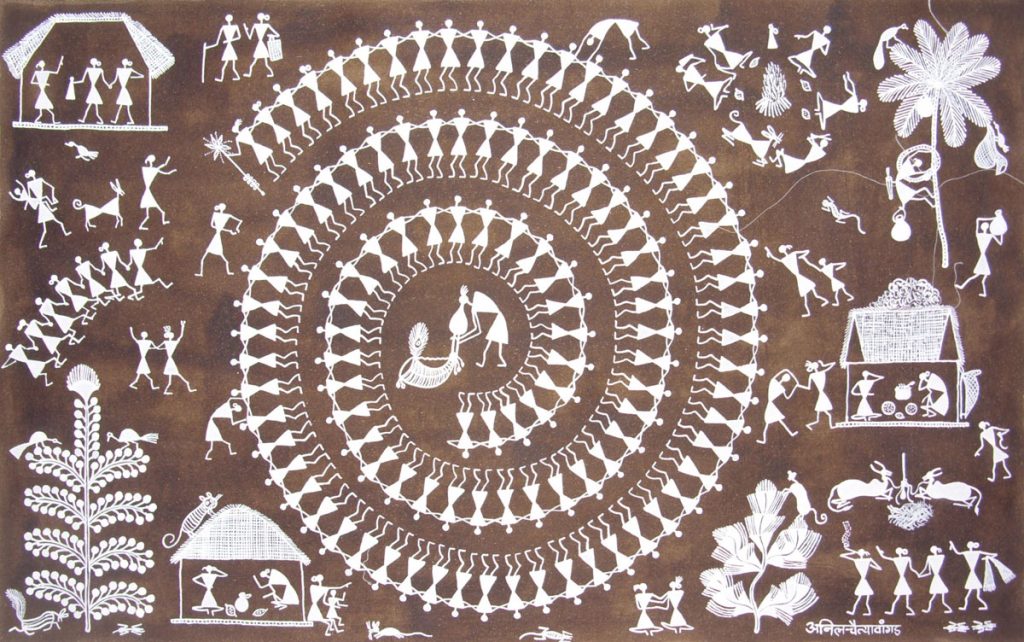
The paintings are made using a sticky paste of rice and water, which is used with the help of chewed bamboo sticks as paintbrushes. The warli painting depicts day-to-day activities of people of the tribe and hence they are mostly paintings on harvest, festival, folk story, celebration, temple marriage etc.
Understanding Warli painting :
- Background for warli painting : In ancient times, the warli paintings were done on red color mud walls of huts and hence, most of the warli art, even the ones made in recent times are made on earthen red coloured background.
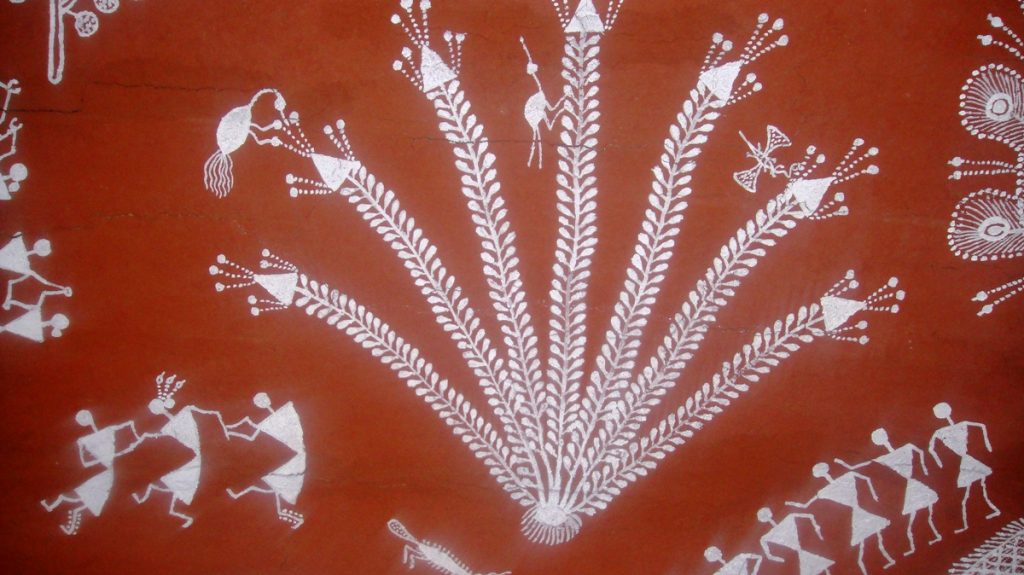
- Colors for warli painting : The women of the society used to decorate the huts with warli painting in times of any sort of celebrations. They used skewed bamboo sticks as paintbrushes to draw out the painting using a paste of rice and water. This is also the reason why most of the original warli art are in a combination of red background with white paints.

- Themes in Warli painting : As told earlier,warli paintings were done during times of festivities and unlike many other art form that revolves around depiction of God and deities,Warli art is mostly illustration of day-to-day activities of the tribes. Warli paintings generally are based on following themes –
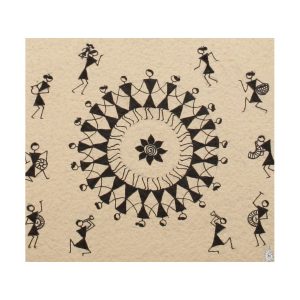
- Festival
- Harvest
- Folk story
- Celebration
- Temple Marriage
- Shapes in Warli painting :Warli painting is an extremely rudimentary type of art form and the paintings were usually done using fewer characters repeated in cascading/continuous patterns. The basic charactersusedinwarli painting are :
- Circle – representation of the sun and the moon
- Triangle – derived from their observation of hills and mountains
- Square – considered to be a sacred enclosure
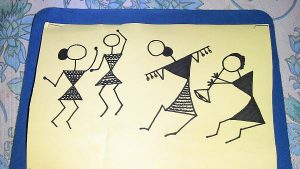
- Ritualistic Warli painting : In every religious/ritual warli painting, there is a central character which is called the chauk/chaukat where the goddess of fertility Palghtatta is depicted. The chaukat in these ritual paintings is surrounded by scenes portraying hunting, fishing and farming, festivals and dances, trees and animals.
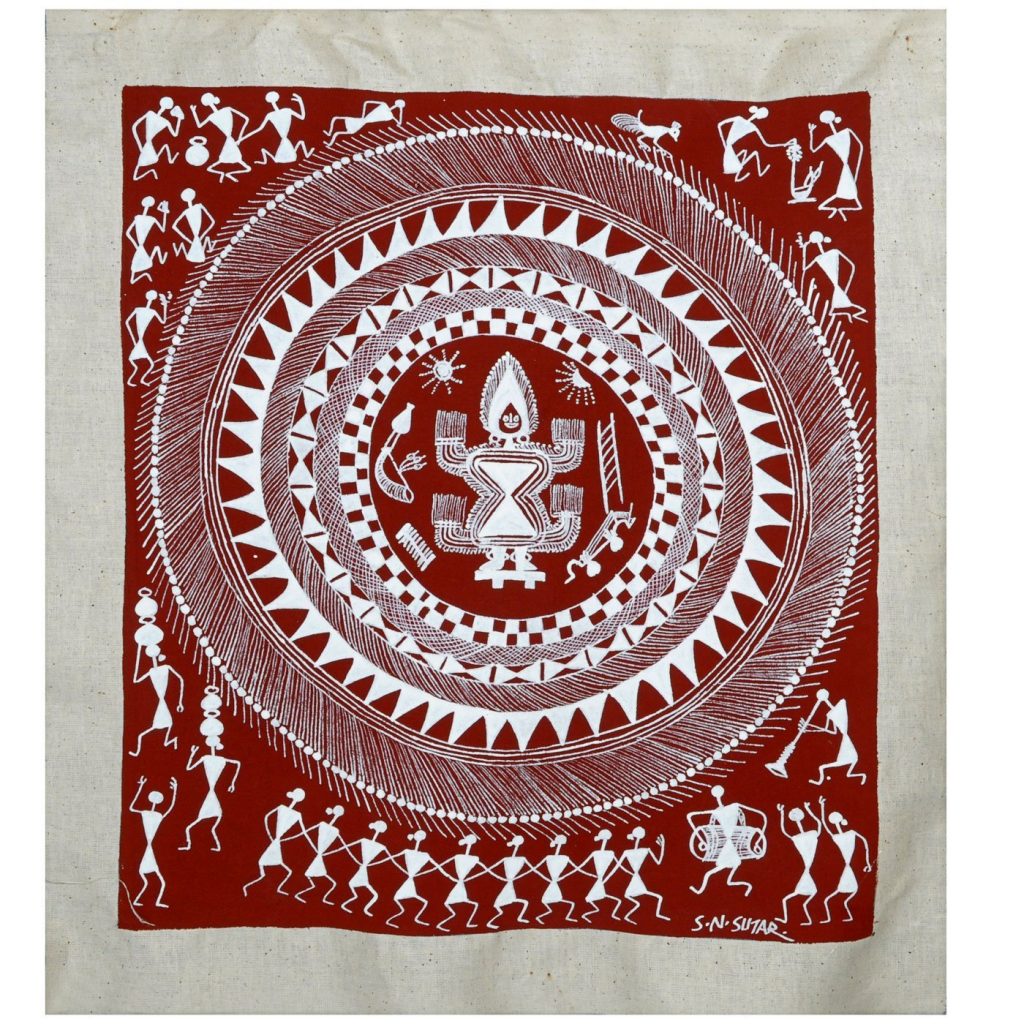
- Human and animal bodies are represented by two triangles joined at the tip; the upper triangle depicts the trunk and the lower triangle the pelvis. Their precarious equilibrium symbolizes the balance of the universe, and of the couple, and has the practical and amusing advantage of animating the bodies.
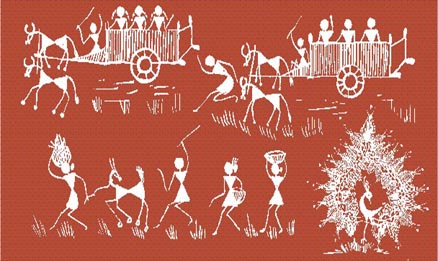
Analyzing a few warli paintings:
The Tarpa dance is typical of Warlis and performed on most festive occasions. The tarpa, a trumpet like instrument, is played in turns by different men. Men and women entwine their hands and move in a circle around the tarpa player.The dancers follow the tarpa player, turning and moving as he turns, never turning their back to the tarpa. The circle formation of the dancers is also said to be a resemble the circle of life
The tarpa, a trumpet like instrument, is played in turns by different men. Men and women entwine their hands and move in a circle around the tarpa player.The dancers follow the tarpa player, turning and moving as he turns, never turning their back to the tarpa. The circle formation of the dancers is also said to be a resemble the circle of life

Warla means a piece of land. Cultivation of paddy is their main source of subsistence and their whole life revolves around the various seasons of the harvest. This painting depicts the typical daily chores in a Warli village.
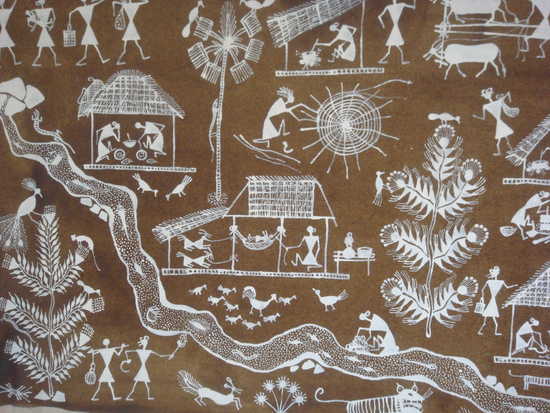
The Warlis celebrate the onset of each season. Observing minute changes in sunrise and sunset, Warlis predict the onset of Monsoon. The first rain in June announces the birth of a new cycle of life. Peacock is said to be able to foretell rain, and dances when rain is coming.
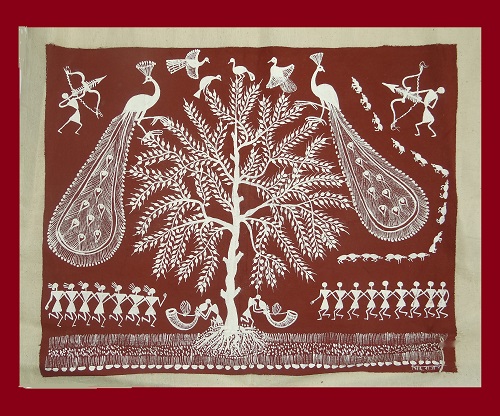
Marriage function is a commonly found warli painting, with the goddess of fertility being the central character. The bride and groom at marriage function, the marriage celebration etc are seen aroung Palaghata.
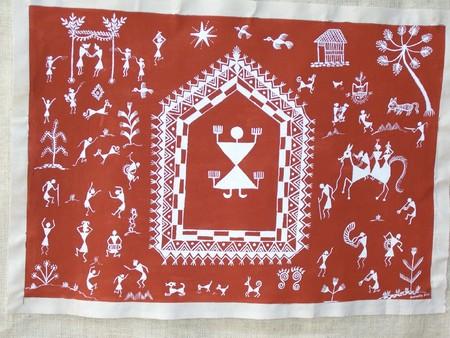
How to adapt Warli art in any DIY.
The traditional form of Warli painting with rice paste and mud walls are impossible to be replicated in modern world.Nevertheless here are some unique ideas into which you can incorporate warli art form
Warli painted handbag – Do you have a plain tote bag that you are bored with? or a color block jute bag? Then its time you find some fabric paint and add this ethnic touch to it with these warli stick figures.
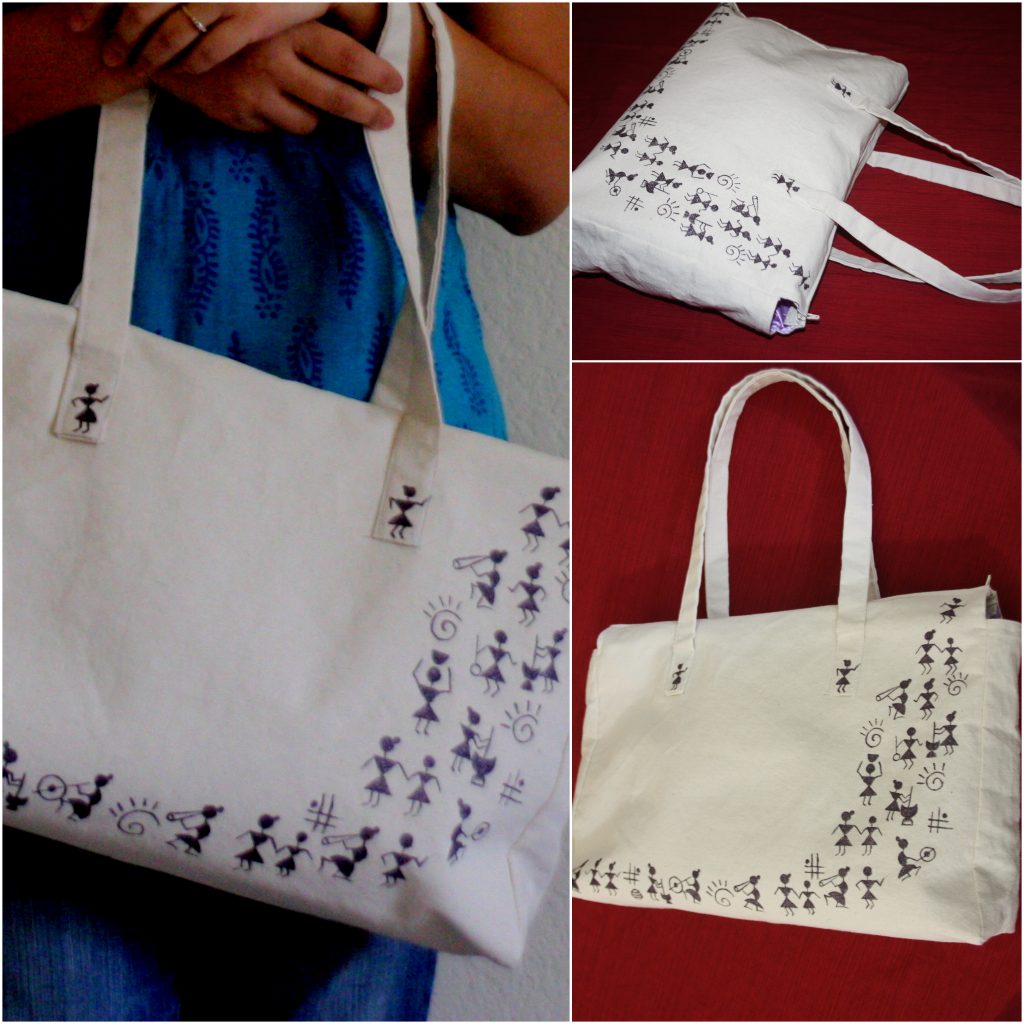
Warli painted umbrella – Having born and brought up in the mallu land, an umbrella is a staple in my handbag! I used to have boring black umbrellas since lately when I purchased this cute peachy pinky umbrella 😉 If you want to turn out different from the pack of black umbrellas on a rainy day, be sure to try this out 🙂

Warli painted night Lamp– A DIY night lamp is an easy project and I am sure to make this one for my guest bedroom 🙂 Gather few handmade papers and add this ancient traditional touch to your lamp by adding some happy dancing warli stick figures.
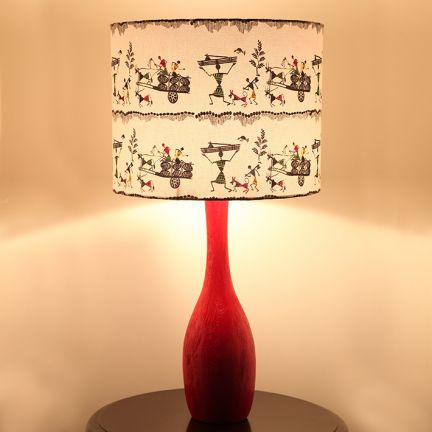
Warli Painting tea coasters – Have plain white boring tea coasters? Try this colourful warli pattern for your tea coasters 🙂
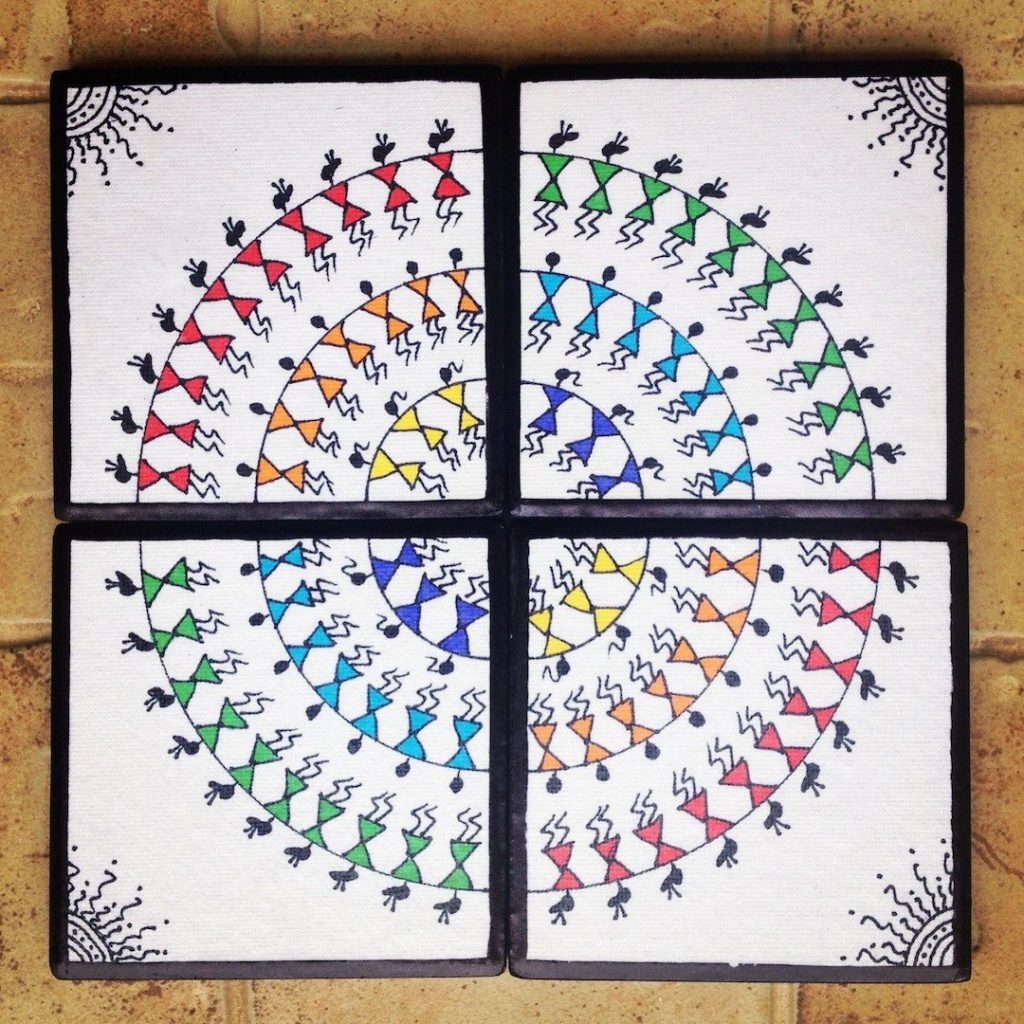
Warli painted wall clock – Ever tried making a wall clock? You can buy the required materials from your local store or better still, take them out of your old unused clocks 🙂 You can make a warli painted wall with stick figures at each number positions. Isnt it a fun thing to do ? This lovely wooden clock really instills a traditional look with the warli figures.
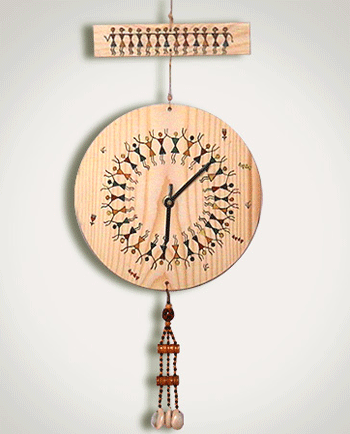
Warli art penstands, mugs, pots : If you want to try on a smaller scale, you can always find plain coloured pen holders, mugs and pots that need a little something more! You could use a permanent marker if you arent sure if paint and brush will work fine and chalk out some warli men dancing around 🙂
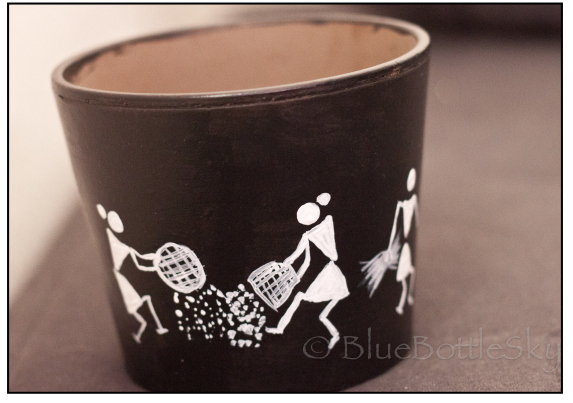
Warli painted room – Modern warli painting is no longer restricted to red and whites. You can have a fusion of colourful madhubani and warli or you can even have rainbow colors! Here is a living room that’s painted with blue-white warli painting.
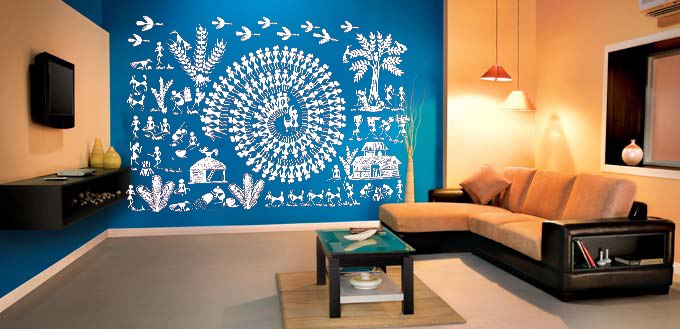
Warli art wall hanging : I loved this wall hanging with multiple pieces and colours. This is such an easy project that you can try them out right away 🙂
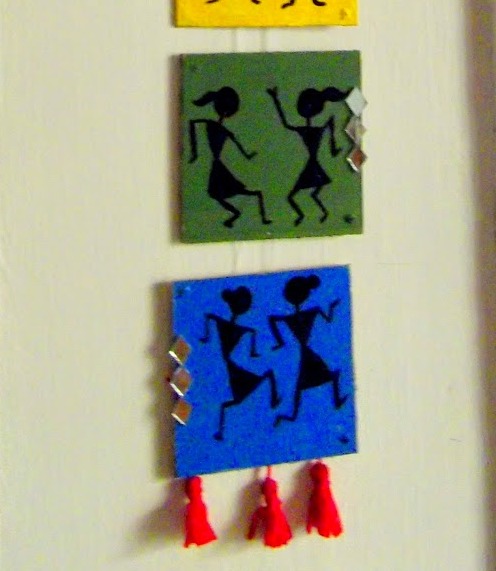
Warli painted cards & envelopes : Isn’t it quite nice when you have some cute little happy dancers greeting you on your envelopes? You can even make stamps of these warli stick figures using m-seal and stamp them on cards & envelopes.
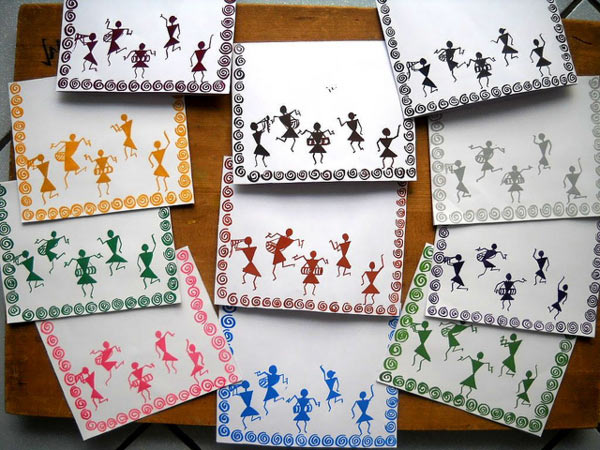
So did you like this compilation of everything about Warli art and also come modern adaptations of the same that you can DIY? Do let me know through the comments below 🙂
xoxo
Angela
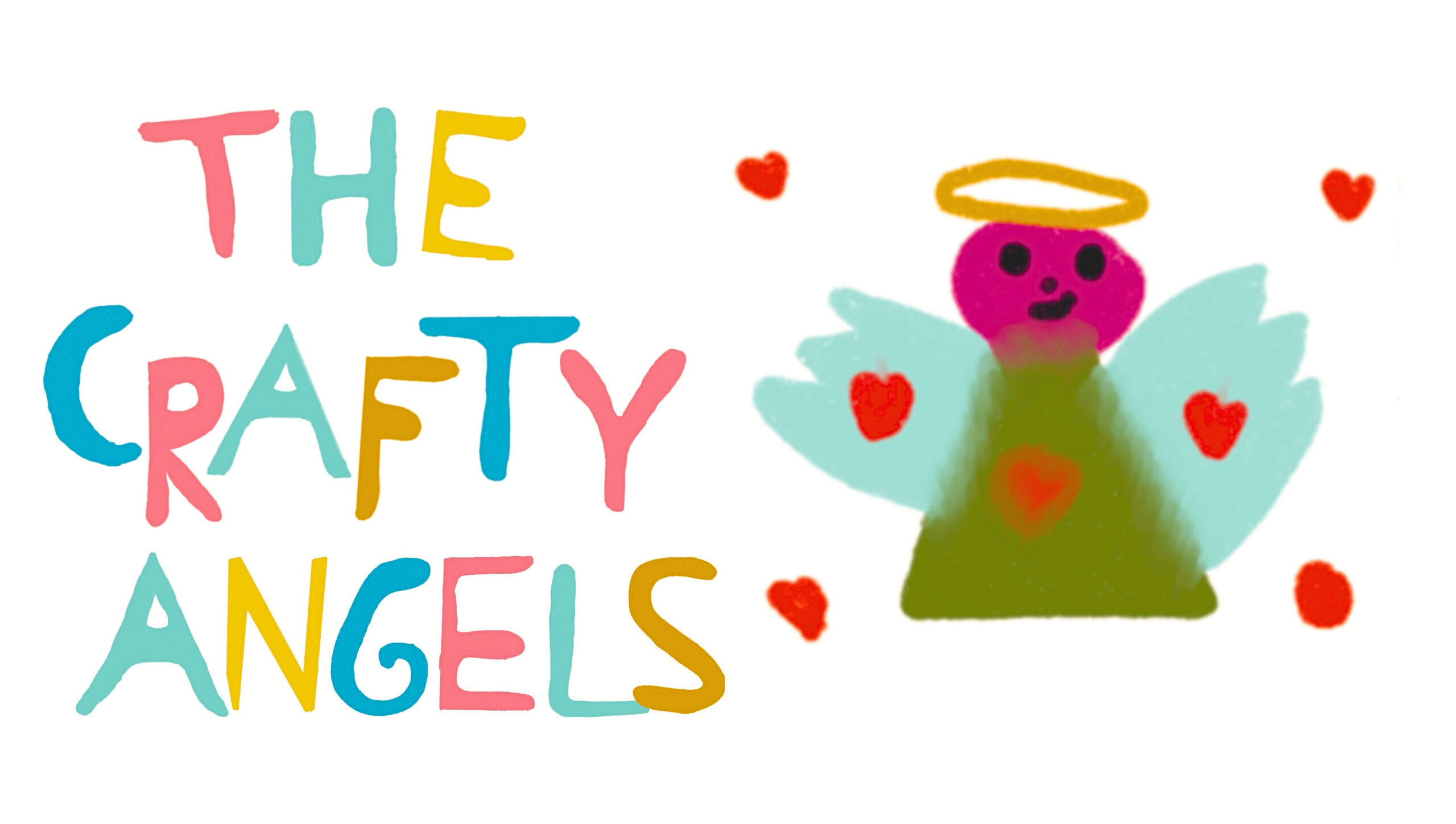
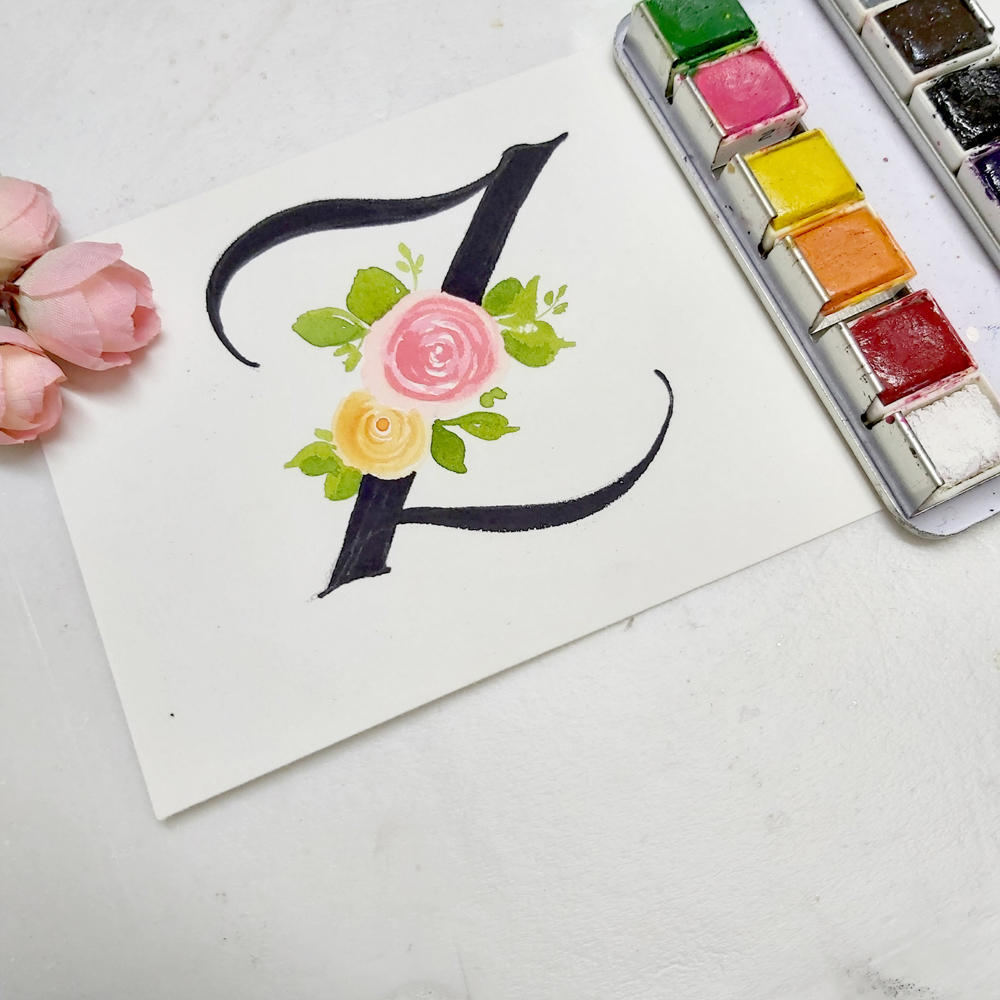
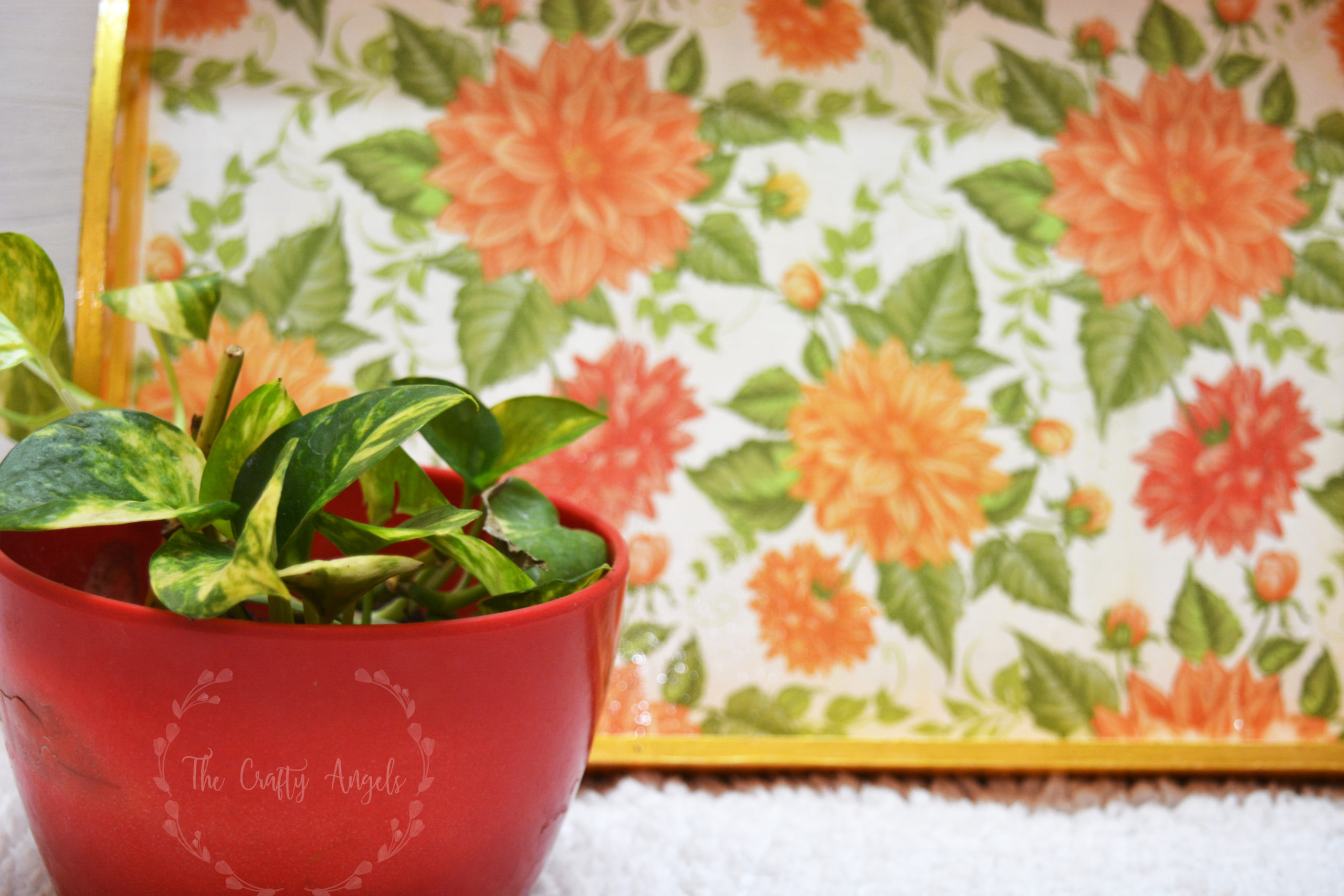
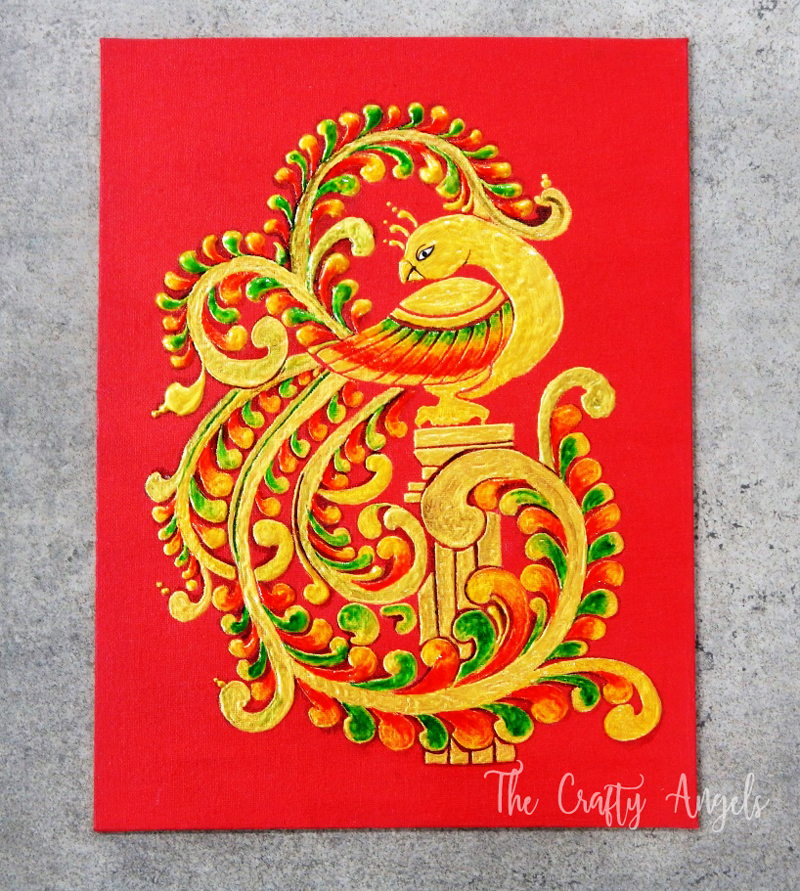
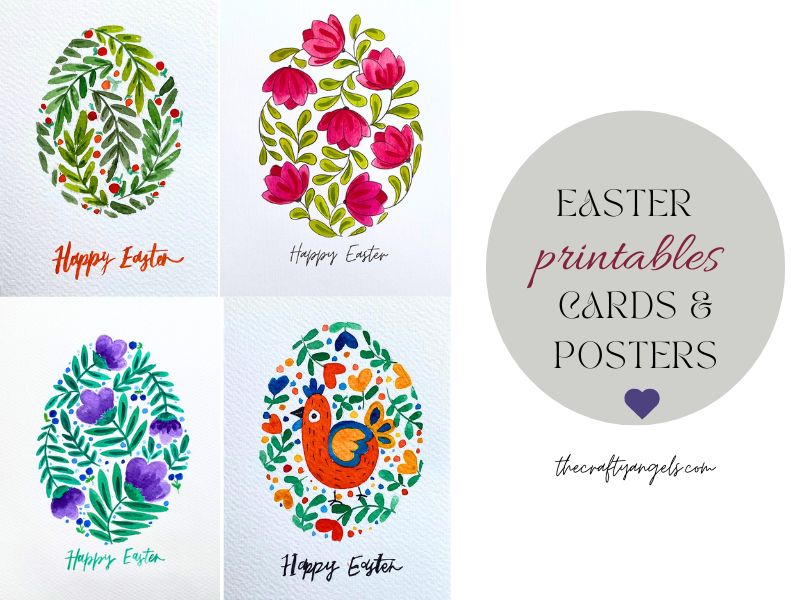
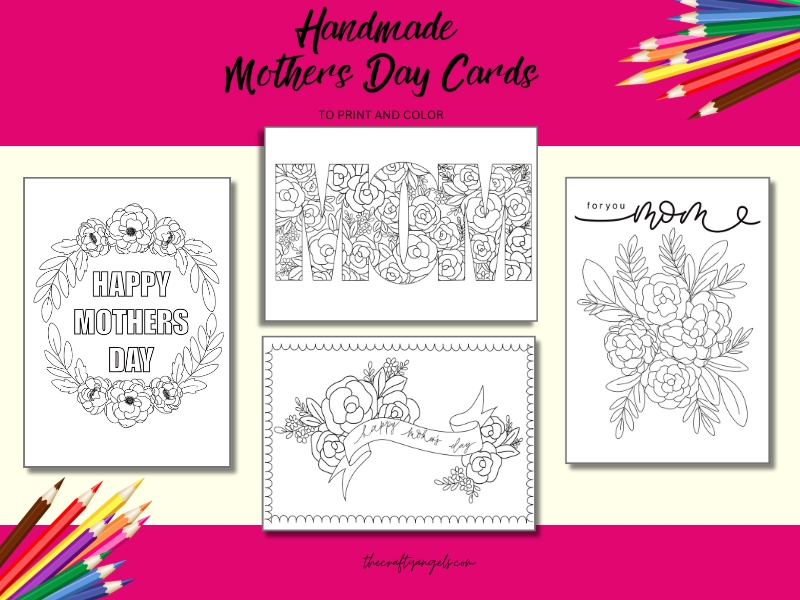
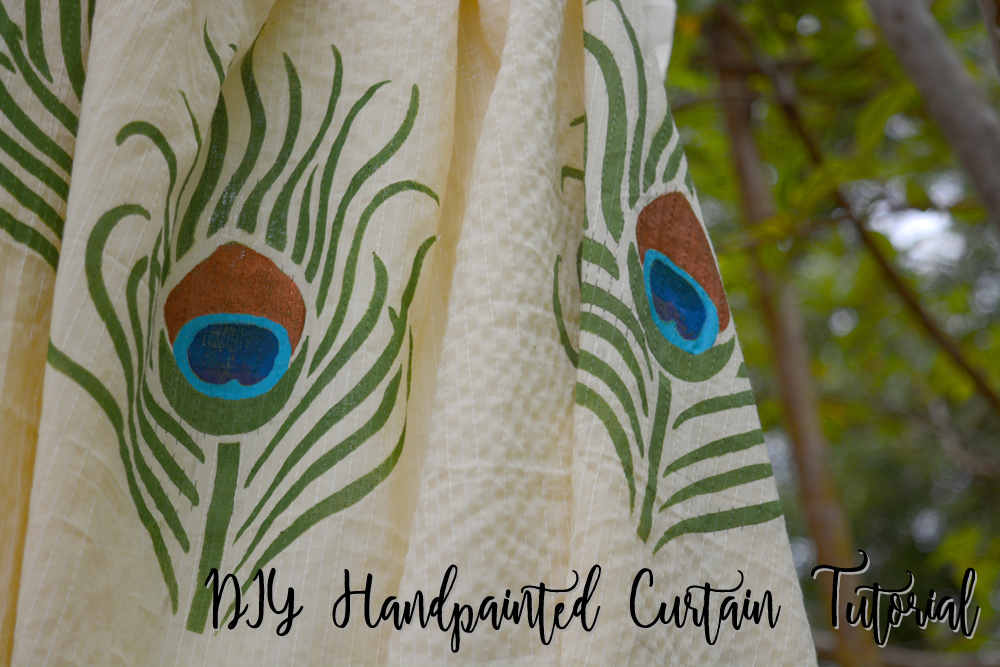
Hello. This is such a nice primer for diy projects using this art form. Thanks for sharing.
Hi,
Awesome write-up.
A quick question — how did you protect the painting on coasters.
Thanks!
Pallavi
Hey pallavi,
For protecting any painting on utility products like coasters, placemats etc apply one full coat clear varnish and allow it to conpletely dry for one full day or two.
hi Angela
Is there any way I can purchase a stencil for this art form, delivered to Australia?
Hey Sunita, I am not aware of shops that deliver to australia but you can definetely get custom stencils made when you are here in India. I am sure craftslane can help you make stencils of your choice but shipping to australia i doubt. Moreover, warli figures are easy to stencil out yourself on an OHP sheet. Let me try myself and if it is successful will put a blog post on DIY warli stencils 🙂
Hi Angela,
I painted a few flower pots with warli design. Now I’m not sure how to take care of the pots as according to my mom that paint will wear off. Please suggest.
Hello seema. Did you paint on earthen pot or plastic pot? Earthen pots generally hold paint well ao you neednt do anything. Additional precuation is to apply a coat of varnish.
Please tell me which type of colours should I apply on earthen pots? Oil paint or acrylics? If acrylics then water or oil base?
on earthen pots you can go for normal acrylic paints from fevicryl which is widely available. Sometimes if you feel the shades are not that bring enough, you can get “gesso” ( camlin has cheap ones) which is white thick paint – first paint the figures with gesso and go over it with acrylic paints.
Hi
Please guide me what material is used for warli painting which paper and colors should be used
Hi nimita, you can use any colors for Warli painting but the most authentic looking one would be when you use white on terracota background.
Wonderful work Angela
Excellent guide on Warli paintings.I loved the analysis of Warli paintings. I would suggest you do a detailed article on the analysis of Warli paintings.
Keep sharing your amazing work.
Thankyou Asif 🙂
V interesting warli painting, I like that most…
Very helpful article.
Thankyou Sejal. Glad you found it useful. 🙂
Very useful article on Warli paintings. I love these all information around paintings. Keep sharing your amazing work.
Thankyou so much Neeti 🙂 I started this series thinking I should cover most indian artforms but eventually ended up with just warli! Will try to compile for other arts too 🙂
Very good Article. I shifted to my new home and want to paint a balcony wall with warli art. I am planning for traditional red and white combination. Can you guide me what Colors I use so the paint is protected with Sun and rain. Thank you.
I also have the same question as Rasika. Should I use oil paints for painting the balcony wall? Please help.
Hey deepali, no no please do not use oil paints. Oil paints, acrylics, fabric paints etc are normally not weather proof and so they will not stay long in sunlight. Get external wall paints. I generally use asian paints apcolite for all DIY wall painting works but you can go to your nearest paint store and check their catalog for ranges & finishes of your choice 😉
Hey Rasika, I haven’t tried it on bare wall but I would suggest exterior wall paint instead of acrylic paints. I use asian paints apcolite emulsion paints for all art and stencil painting works on my wall. You could check out the texture and finish from your local paint shop -they will have samples 🙂 Hope this helps 🙂
Want to learn warli art
Hey there! I enjoyed reading this post and the way you educate us is fantastic. I had also learned Warli Painting On Jewellery from the best courses of Penkraft’s Warli Painting. The best thing about this course is they not only provide Art Kits but, also they’re very good at teaching the art courses.
Here is the website where you can see more details – https://diy.penkraft.in/
Very informative blog about Warli Art Angela😊
thankyou 🙂